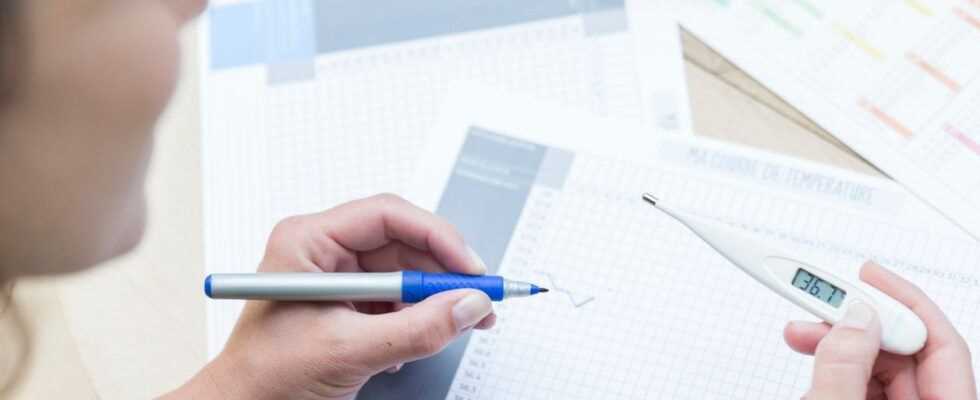Do you want a child and want to put the odds on your side to conceive at the right time? Try the temperature curve (or thermal curve method). We explain how to proceed.
During conception, the temperature curve represents a natural way for every woman to detect her fertile period, especially when pregnancy is slow to arrive or when treatment is underway to become pregnant.
Indeed, the variations in your body temperature throughout the cycle can help you determine this famous auspicious moment.
How does body temperature change during the menstrual cycle?
The menstrual cycle is divided into three phases: the follicular phase which extends from the first day of menstruation until ovulation, ovulation and the luteal phase which extends from ovulation until the first day of menstruation following. During these three phases, the body temperature undergoes variations:
- during the follicular phase, the body temperature is low, usually below 37 ° C (it oscillates between 36.5 ° C and 37 ° C). It remains stable throughout this first part of the cycle.
- just before ovulation, the temperature drops slightly, a few tenths of a degree.
- after ovulation, the temperature rises by several tenths of a degree to go above 37 ° C. It remains stable throughout the luteal phase and forms a thermal plateau. This increase is due to the secretion of progesterone by the corpus luteum. This hormone is known to raise body temperature.
- if there is no fertilization, the temperature returns to its start-of-cycle level (below 37 ° C) just before your next period begins. In pregnancy, the thermal plateau of the luteal phase continues because the corpus luteum still secretes progesterone.
In a woman who ovulates during the cycle, the body temperature therefore consists of two thermal plateaus separated by a slight pre-ovulatory drop and a post-ovulatory rise.
How to make your temperature curve?
You should take your temperature every morning before getting up, from the first day of the cycle (first day of your period) to the first day of the next cycle. This temperature reading must always be taken under the same conditions, namely always the same method (oral, rectal, frontal or under the armpit) and always at the same time and with the same thermometer. Each temperature should be recorded accurately (to the nearest tenth) on a sheet of graph paper in a curved graph showing the days of the cycle on the horizontal axis and the temperature to the nearest tenth of a degree on the vertical axis. The points corresponding to each temperature reading are to be linked together to obtain a curve.
These curve charts can also be downloaded online for printing. Several apps also offer them.
How to interpret the temperature curve?
The temperature curve makes it possible to confirm the occurrence of ovulation during the cycle but also to determine the date. In fact, if your curve indicates a rise in temperature in the middle of the cycle followed by a thermal plateau, then you have ovulated. Ovulation takes place the day before the increase in temperature, more precisely the day when the temperature drops slightly and then rises again. The temperature chart gives you the date of ovulation after it has passed and the best time to conceive is over. It therefore gives you an indication of your presumed ovulation period for the next cycle, which is the number of days between the first day of your period and ovulation. To obtain the most reliable data possible, it is recommended to perform the temperature curve over at least 3 consecutive cycles.
Note that this method only works if the cycles are regular.
To read also on aufeminin
Maximize Your Chances of Getting Pregnant Quickly
How to get pregnant with a girl
I want a baby: when is the right time to get pregnant?
When the curve is flat, is this a sign that you are not ovulating?
The purpose of the temperature curve is to identify when you ovulate. If your curve is flat throughout the cycle, that is, there is no drop or rise in temperature, it may mean that there was no ovulation. If this pattern recurs over several cycles and you do not get pregnant after several months of trying, it is best to see a doctor for further tests. But rest assured, one in five women who ovulate will not have a noticeable temperature change. In other words, your ovulation may go unnoticed on the temperature chart.
The Heat Curve Method is a free and easy way to identify your ovulation period. But it is not 100% reliable for women who want to get pregnant (as well as for those who use it for birth control). Indeed, the variation in body temperature is sensitive to many factors (medication, infections, lack of sleep, stress, etc.).
